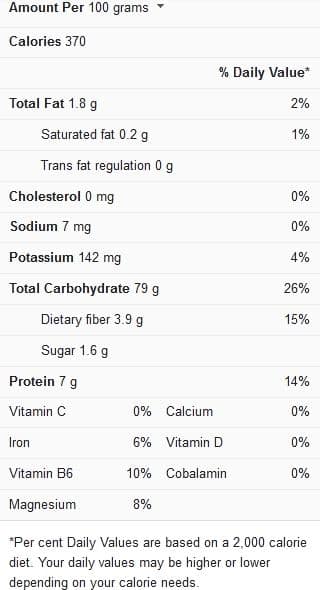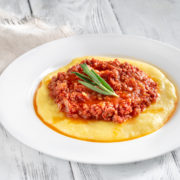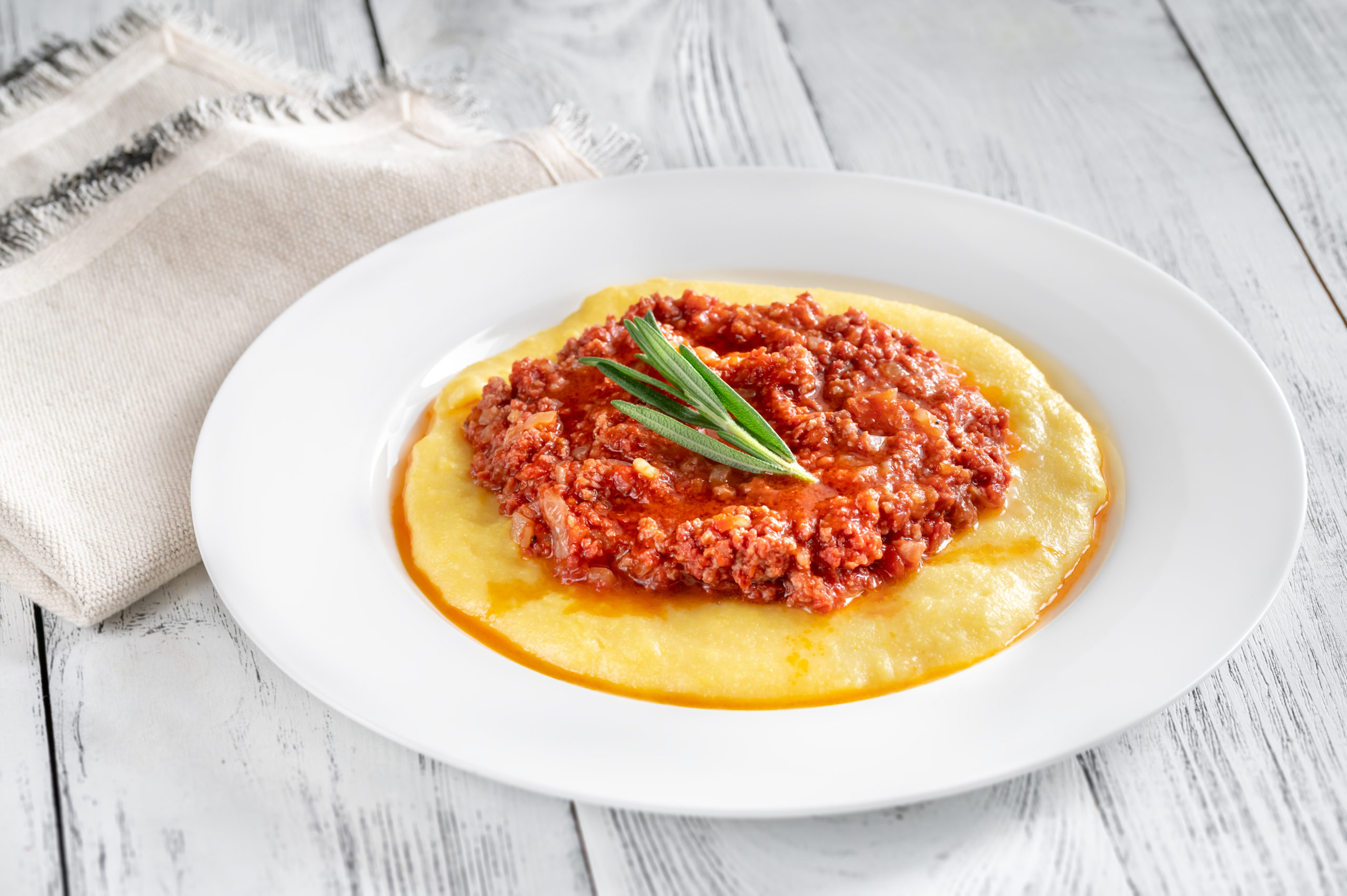Updated on October 18th, 2022
Polenta is a dish made from dried white or yellow corn that has been pounded into flour. Polenta is an Italian delicacy with a great earthy flavor that has gained popularity around the globe in recent times.
Polenta, made from various grinds of cornmeal, can be served as a main dish, a healthy side dish, an appetizer, or even breakfast in northern Italy. This article will take you through making polenta blue, highlighting the easiest steps and helpful tips for the best results.
Polenta Nutrition Facts

Tips for Cooking Polenta
People believe there are a lot of regulations to follow when making polenta, such as using a wooden spoon, stirring in only one way, putting the polenta in hot water, and constantly stirring. Despite this, the most important thing to remember is to use the proper liquid-to-cornmeal ratio and to enable the cornmeal to hydrate thoroughly.
These tips should help you achieve the best results with polenta recipes:
Hydrate the Polenta – A five-to-one liquid-to-cornmeal volume ratio yields polenta that is properly hydrated and cooked through, with no raw, gritty bits. Presoaking the cornmeal is optional, but it helps moisten it and reduces cooking time.
It doesn’t have to be exactly polenta – Polenta does not have to be made with a product labeled “polenta.” There’s nothing wrong with using polenta-specific cornmeal, but you can easily substitute any medium- or coarse-ground cornmeal.
Grits, which are ground coarser than polenta and occasionally made using a different species of corn (dent instead of flint), are a perfectly suitable replacement in almost any case where polenta is required.
Acceptable liquid choices – Aside from the type of cornmeal, the most important selection is what kind of liquid you’ll use to make the polenta. Unfortunately, water isn’t always the only acceptable option for polenta.
Milk, for example, provides an extremely rich and creamy polenta that’s a lot more of an indulgence on its own, whereas chicken stock adds a lot more flavor to the polenta. Depending on your needs, they’re both excellent choices. However, adding water to the polenta makes it more neutral, allowing the maize taste to show through.
The Ideal Polenta-to-Water Ratio – Any recipe that calls for fewer than four parts water to one part polenta should be cautiously approached. Unless it’s using instant or rapid polenta, such a low ratio hardly ever creates good results.
The difficulty with using less liquid than that is that the cornmeal will nearly never be thoroughly hydrated: Although the polenta will thicken and appear to be done sooner, the small pieces of dry corn will maintain an unpleasant crunch. In other words, too little water results in undercooked and grainy polenta.
Shortening the required cooking time – The secret is to soak the polenta for several hours in its liquid before cooking it. This step helps to properly hydrate the cornmeal, significantly reducing the cooking time. Polenta that would have taken an hour without presoaking can be cooked in about 30 minutes if soaked.
View this post on Instagram
Cooking Polenta Blue
The following steps can be followed when cooking polenta blue:
- If you’re using the presoaking technique, make sure to mix the water and cornmeal in a large mixing bowl, cover it and leave it at room temperature to soak overnight. Scrape wet cornmeal and water into a big saucier or skillet and place over high heat when ready to cook.
- If using the traditional method, fill a large saucier or saucepan halfway with water, milk, or stock and heat on high. While whisking, sprinkle in the cornmeal (water does not boil).
- Bring to a boil, constantly stirring. Allow boiling, often stirring, until the polenta thickens to the point where it spits. Reduce heat to low to avoid spitting and cooking, often turning with a spoon or silicone spatula and scraping the bottom to avoid burning until polenta thickens and pulls away from the edge of the saucepan.
Let this last for about 30 minutes for presoaked cornmeal and 50 minutes for dry cornmeal—season with salt.
- Stir in the butter or olive oil using a spoon, a silicone spatula, or a whisk. The extra fat will make the polenta glossy, and it should feel rich, creamy, and smooth. If polenta lumps form, rapidly whisk them out with a firm whisk. If the polenta turns stiff or hardens, whisk in a small amount of water, stock, or milk until the liquid is completely blended and there are no lumps.
- Serve immediately with a side dish of your preference.
Polenta (4 servings)
Ingredients
- One cup coarse or fine cornmeal, artisanal if possible.
- 4 to 5 cups of water
- 1 ½ teaspoon of salt
Instructions
- In a pot with plenty of room to stir, bring water and salt to a boil.
- Slowly sprinkle in the cornmeal, stirring constantly. As you add the cornmeal, you should see the individual grains. This will assist in keeping lumps at bay. If a lump forms, stop adding cornmeal and vigorously mix to break it up.
- Using a wire whisk to vigorously swirl the water while adding the cornmeal to avoid lumps, switch to a solid wooden spoon once all cornmeal has been added.
- Cook for 45-60 minutes, frequently stirring, once all the cornmeal has been added. Cooking coarse cornmeal takes much longer than fine cornmeal. Cooking time should be kept to a minimum of 45 minutes. Because the flavor of polenta changes with time, don’t treat it like grits and cook it quickly.
- If the polenta becomes too firm before the cooking time is finished, add a small amount of BOILING water and stir thoroughly.
- It should be thick yet pourable, not runny when the polenta is done.
- Serve immediately in a shallow serving dish or on a rimmed tray.
Making polenta blue is quite easy, and following the recommended steps closely allows for the best possible results. Other ideas for making polenta blue can be found in this video recipe.

